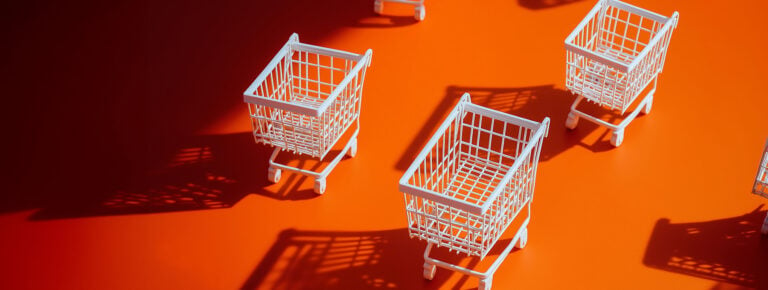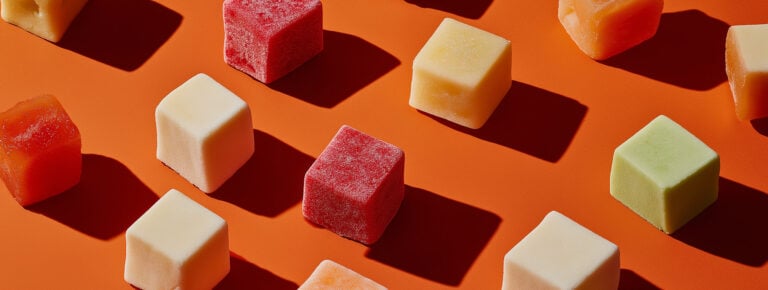The way we shop online is changing, and it’s changing fast. The younger crowd is especially quick to adopt and embrace new technologies, and the battle for market share, especially in luxury retail, is very much an innovation race.
One technology that is quickly gaining ground in luxury ecommerce is visual search: search based on images instead of text. It’s a relatively new and highly convenient way to shop that helps consumers with questions that can be tricky to address with text-based queries, such as, “What shoes go with this dress?” or “Where can I get that jacket my favorite influencer is wearing?”
Visual search is growing in popularity, and research shows that as many as 62% of millennials are more interested in visual search than other up-and-coming technologies. And Gartner predicts that by the end of 2021, early adopters of visual and voice search stand to increase their ecommerce revenue by 30%.
Related reading: Optimizing Ecommerce Through Visual Search
The New Way of Shopping: See it, Snap it, Shop it
The digital luxury platform Farfetch was one of the pioneers in visual luxury shopping when they introduced their visual search app in 2018. With the device “See It, Snap It, Shop It,” the app was a successful attempt to win over particularly Millenials and Gen Z, who generally feel more at home on Instagram than in old-school flagship stores. A visually driven audience, but one that draws their inspiration from influencers on social media rather than from ads in fashion magazines.
Farfetch’s customers can upload images they find on Instagram, Pinterest, or any other visual platform using the visual search app. Then the app shows them the same, or similar, items. The app analyzes the merchandise based on parameters like color, fit, material, or other attributes and quickly serves the shopper with the look they want or a similar alternative. The whole journey, from search to purchase, happens in-app. This minimizes all friction and makes for a very smooth and convenient buying experience. With an app like this, you can both browse street style inspo, and shop on the high-street, without even having to leave your couch.
Digital Natives Don’t Want Brick and Mortar Stores
Younger luxury consumers are not looking for the same shopping experiences that drove the luxury market even just a decade ago. Back then, the elusive exclusivity of luxury retail was partly created by the “hard to get” factor that made tourists form long lines outside the Louis Vuitton shop in Champs Elysees every morning before the store had even opened.
Today’s consumers don’t buy into that kind of hype. They prefer convenience and are accustomed to getting everything delivered to their doorstep. But, herein lies the challenge for luxury brands; they still want unique and exclusive shopping experiences. They still want to feel like they’re VIP customers and that the extra money they’re paying is getting them something beyond just the product. Today, just like yesterday, luxury customers are looking for luxury experiences. It’s just the nature of those experiences that have changed and evolved.
Digitally apt luxury brands are now competing to create the most impressive online journeys and wow their audience with innovative features. And while many luxury brands were initially slow to adapt to the new ecommerce landscape, today many of them are at the very forefront of digital innovation.
Related reading: Redefining Digital Luxury Experiences in Ecommerce
Luxury Shopping, Influencers, and Social Media
Visual inspiration in the form of images and video is, as it always has been, an essential driver of luxury shopping. What has changed is where and whom those images come from. The people posting the pictures that impact the trends and desires of today and tomorrow are no longer the big ad agencies. Instead, they are our real-life friends, influencers we admire, or strangers posting their outfit of the day online.
This change has had a profound impact on how brands operate, and it’s an evolution that both poses challenges yet also presents opportunities. Brands that succeed in harnessing the power of influencers and social media platforms gain access to a market of highly motivated buyers. But the brands who fail to keep up with new technology and viral trends risk getting hopelessly left behind.
|
Want more advice on this topic? |
From Flagship Stores and Webshops to Mobile-First and In-App Shopping
In recent years, luxury shopping has not only moved online but also increasingly moved to mobile. Thus, mobile apps have become the main access point for even the creme-de-la-creme of luxury retail. One example of this is the app launched by Louis Vuitton, the LV Finder, which allows consumers to upload photos of bags they like and immediately access the same, and similar bags and their product descriptions.
This trend is also closely tied to that of social shopping, and shoppable content. All these trends are about building optimized ecommerce strategies that turn everyday digital experiences into an opportunity to buy – without leaving the platform that a customer is already using.
Related reading: Social Commerce In 2021 and Beyond
Discovery Design: The New Luxury Shopping
Visual search is really a part of a more significant trend, often referred to as Discovery Design. It’s a modern approach to ecommerce that combines advanced personalization with innovative product discovery methods to offer intuitive and convenient shopping experiences. Discovery Design has quickly become one of the top strategies for luxury brands looking to build brand affinity and create smooth and engaging buying journeys.
One of the main benefits of Discovery Design is that it allows for a tailored and inspiring customer journey for all types of consumers. Whether someone is looking for a particular luxury item or wants to browse for ideas and inspiration, Discovery Design allows ecommerce retailers to introduce the most relevant products to each person at the exact right time in their discovery journey.
The ROI of visual search is often impressive. Our partner Syte has seen retailers experience increases of as much as 9.8% in AOV and a 177% increase in conversions. And for jewelry brands, the number skyrocketed to a whopping 689.6% conversion rate increase, compared to when shoppers did not use the visual search tools.
Visual Search: A Customer-Centric Approach
We often hear that we live in the age of the customer, where consumers are more empowered than they’ve ever been because of the unlimited access to the information we all have today. One could also say that we live in the age of ever-increasing customer expectations, where demands for personalized and seamless experiences are constantly increasing.
One benefit of visual search is that it puts the consumer in the driver’s seat. It empowers consumers and allows them to own and control their buying journey in a new way, with a more interactive approach. Instead of having to adapt to a predefined menu of items, the shopper gets served suggestions based on exactly what they’re looking for.
No more browsing through row after row of irrelevant items in search of that perfect pair of shoes you spotted the other day. No more endless scrolling through things you don’t want. Visual search enables a more organic and agile shopping experience that truly puts the customers and their needs and desires at the center.
HOW VAIMO CAN HELP
At Vaimo, we’re experts at all things ecommerce, and we’re always at the forefront of technological developments. We collaborate with innovative tools and platforms like Syte to offer our clients the best possible ecommerce solutions optimized to drive ROI from day one.
Visual Search and Discovery Design hold enormous potential for luxury ecommerce brands and merchants. We would be happy to help you explore the opportunities and plan your next step towards fantastic customer experiences. Get in touch with our team of experts to learn how we can help you grow your brand.








